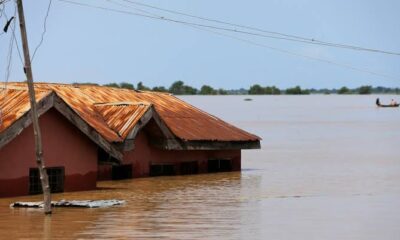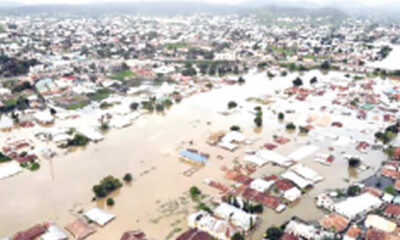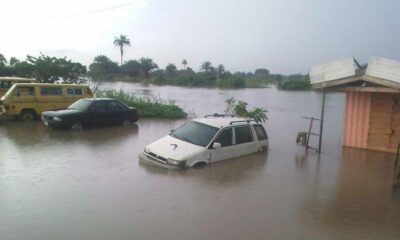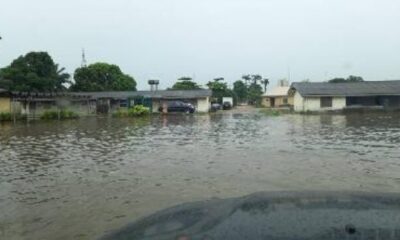National
Flood: What You Should know About Lagdo Dam

Flood has killed more than 300 persons, injured 500 persons and displaced 100,000 others in Nigeria in 2022, according to records disclosed by the National Emergency Management Agency (NEMA), by its Director-General, Mustapha Ahmed.
A report by the News Agency of Nigeria claimed that the NEMA boss announced this at an emergency technical meeting on the flood situation in the country in Abuja, on September 19.
This record, however, differs from that contained in a report by NAN on October 1, 2022, which stated that about 651,000 were displaced by flooding which ravaged Anambra State alone.
Aside from the cases of flooding recorded in various parts of the country, particularly in the coastal states and the North-East region, is the most recent incident in Kogi State, which claimed six lives, with buildings submerged and several residents displaced. This led the state governor, Yahaya Bello, to call on the President Muhammadu Buhari (retd.), to declare the Kogi flooding situation as a national disaster.
However, it is worrisome that little attention appears to be paid to the historical and geographical cause of devastating floods in Nigeria.
The Cameroon Lagdo Dam and Flooding in Nigeria
In September, the Cameroonian authorities reportedly opened overflow spillways at its Lagdo Dam to relax the pressure on the dam as a result of the rising water contained in it.
Rivers connected to the Cameroonian dam such as the Benue River are affected by an overflow from this dam, a report by the United Nations International Organisation for Migration confirmed.
According to information available on the IOM website, unprecedented heavy rainfall, in combination with spillage when the Lagdo dam in northern Cameroon was opened to release excess water, has displaced over 39,500 people. “An assessment by the IOM’s Displacement Tracking Matrix concluded that 120 people in Bauchi State died or were injured due to extreme weather conditions between September 1 and 12, 2022,” it said, adding that about 39,500 people were displaced with 15,000 in need of accommodation.
The effect of the release of water from this dam is largely felt on surrounding regions in states like Kogi, Benue, and some northeastern states (Adamawa, Bauchi, Borno, Gombe, Taraba, and Yobe).
The construction of the Lagdo Dam located in northern Cameroon started in 1977 and was completed in 1982.
Records indicate that Cameroon and Nigeria were supposed to build two dams at inception, such that the Nigerian dam, known as Dasin Hausa dam which was to be in Adamawa State, would contain water released from the Lagdo Dam at any point in time.
The Dasin Hausa dam was supposed to be two and a half the size of the Lagdo dam, meant to supply electricity to the northern part of Cameroon and also aid irrigation. However, that dam has not been built.
On September 19, NEMA had also warned of the release of excess water from the Lagdo Dam in Cameroon.
NEMA’s DG, Ahmed, said that the warning became necessary as the Lagdo dam operators in the Republic of Cameroon had begun to release excess water from its reservoir, which would in turn get to Nigeria.
He added that some of the states were also expected to record heavy floods due to predicted above-normal rains, coupled with the combined waters from the Rivers Niger and Benue.
“Based on our communication with the Nigeria Hydrological Services Agency, the Lagdo dam operators in the Republic of Cameroun have commenced the release of excess water from the reservoir by September 13.
“We are aware that the released water cascades down to Nigeria through River Benue and its tributaries, thereby inundating communities that have already been impacted by heavy precipitation.
“The released water complicates the situation further downstream as Nigeria’s inland reservoirs including Kainji, Jebba, and Shiroro are also expected to overflow between now and October ending, according to the Nigeria Hydrological Services Agency.
“According to Nigeria Hydrological Services Agency, Kainji and Jebba dams have already started spilling excess water from their reservoirs.
“This will have serious consequences on frontline states and communities along the courses of rivers Niger and Benue,” he said.
Send Us A Press Statement Advertise With Us Contact Us
And For More Nigerian News Visit GWG.NG












